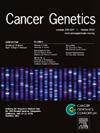73.基于病理组学的机器学习与深度学习:哪种方法更适合全切片图像分析?
IF 1.4
4区 医学
Q4 GENETICS & HEREDITY
引用次数: 0
摘要
病理学依靠显微镜检查 H&E 染色的 FFPE 组织切片进行诊断。病理组学量化数字化 FFPE 图像或全切片图像(WSI)中的特征,这些特征反映了可能与 RNA 测序中的基因表达模式相关的组织和细胞结构。虽然深度学习(DL)方法推进了WSIs的基因表达预测,但了解影响模型预测的病理特征仍具有挑战性。我们的研究分析了TCGA注册中心的89张FFPE乳腺癌组织切片图像,使用HistomicsTK提取了约300个病理特征。这些特征代表细胞形态、强度和梯度,在病理学家注释的肿瘤区域内进行评估。我们为多任务回归模型选择了异质性最强、相关性最高的特征,对 MFAP5 和 MXRA8 这两个生物标记物的基因表达水平进行了高精度预测(AUC > 0.8)。相比之下,在随机 WSI 补丁上训练的 ResNet-50 DL 模型对这些生物标记物的 AUC 分数较低,而且没有解释有助于基因表达预测的病理特征。文献表明,乳腺癌中 MFAP5 的上调与预后不良有关,而 MXRA8 则会调节三阴性乳腺癌的进展。研究得出结论:基于病理组学的机器学习在预测浸润性乳腺癌 FFPE WSI 的基因表达方面优于 DL,为从分子水平了解疾病提供了更有效的工具。本文章由计算机程序翻译,如有差异,请以英文原文为准。
73. Pathomics-based machine mearning versus deep learning: Which is a better approach for whole slide image analyses?
Pathology relies on examining H&E-stained FFPE tissue sections via microscopy for diagnosis. Pathomics quantifies features from digitized FFPE images, or whole slide images (WSIs), reflecting tissue and cellular structures potentially linked to gene expression patterns seen in RNA sequencing. Although Deep Learning (DL) methods have advanced gene expression prediction from WSIs, understanding the pathomic features affecting model predictions is challenging.
Our study analyzed 89 FFPE breast cancer tissue slide images from the TCGA registry, extracting around 300 pathomic features using HistomicsTK. These features, representing cell morphometry, intensity, and gradient, were assessed within tumor regions annotated by pathologists. We selected the most heterogeneous and correlating features for a multitask regression model, predicting gene expression levels with high accuracy (AUC > 0.8) for two biomarkers, MFAP5 and MXRA8.
In contrast, the ResNet-50 DL model trained on random WSI patches showed lower AUC scores for these biomarkers and did not interpret pathomic features that contribute to gene expression predictions. Literature suggests MFAP5 upregulation in breast carcinomas correlates with poor prognosis, while MXRA8 modulates triple-negative breast cancer progression.
The study concludes that Pathomics-based Machine Learning outperforms DL in predicting gene expression from FFPE WSIs in invasive breast carcinoma, providing a more effective tool for understanding the disease at the molecular level.
求助全文
通过发布文献求助,成功后即可免费获取论文全文。
去求助
来源期刊

Cancer Genetics
ONCOLOGY-GENETICS & HEREDITY
CiteScore
3.20
自引率
5.30%
发文量
167
审稿时长
27 days
期刊介绍:
The aim of Cancer Genetics is to publish high quality scientific papers on the cellular, genetic and molecular aspects of cancer, including cancer predisposition and clinical diagnostic applications. Specific areas of interest include descriptions of new chromosomal, molecular or epigenetic alterations in benign and malignant diseases; novel laboratory approaches for identification and characterization of chromosomal rearrangements or genomic alterations in cancer cells; correlation of genetic changes with pathology and clinical presentation; and the molecular genetics of cancer predisposition. To reach a basic science and clinical multidisciplinary audience, we welcome original full-length articles, reviews, meeting summaries, brief reports, and letters to the editor.
 求助内容:
求助内容: 应助结果提醒方式:
应助结果提醒方式:


